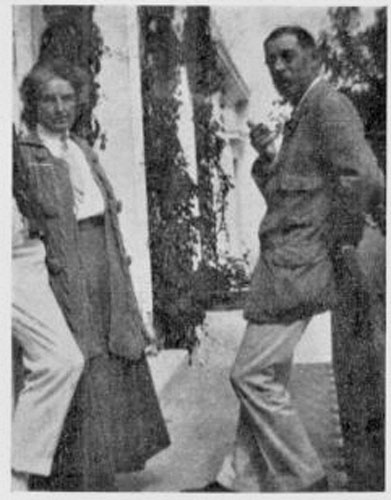Difference between revisions of "December 11, 2010"
| Line 3: | Line 3: | ||
<!-- ws:start:WikiTextHeadingRule:0:<h1> --> | <!-- ws:start:WikiTextHeadingRule:0:<h1> --> | ||
<!-- ws:start:WikiTextLocalImageRule:10:<img src="/file/view/LPOD-Dec11-10.jpg/187271559/LPOD-Dec11-10.jpg" alt="" title="" /> -->[[File:LPOD-Dec11-10.jpg|LPOD-Dec11-10.jpg]]<!-- ws:end:WikiTextLocalImageRule:10 --><br /> | <!-- ws:start:WikiTextLocalImageRule:10:<img src="/file/view/LPOD-Dec11-10.jpg/187271559/LPOD-Dec11-10.jpg" alt="" title="" /> -->[[File:LPOD-Dec11-10.jpg|LPOD-Dec11-10.jpg]]<!-- ws:end:WikiTextLocalImageRule:10 --><br /> | ||
| − | <em>image by [mailto:philip.morgan@talktalk.net | + | <em>image by [mailto:philip.morgan@talktalk.net Phil Morgan]</em><br /> |
<br /> | <br /> | ||
| − | Edmund Neison was born in Beverley, Yorkshire, England in 1849 August 27, and was educated at Harrow in New College, Oxford. His real name was Edmund Neville Neison Nevill, but chose to call himself Edmund Neison because he felt that the holder of an ancient name should not make a career in science. In 1894 he married Mabel Grant and together they had three children. His book, <em>[http://the-moon.wikispaces.com/Neison%2C+1876 The Moon]</em>, appeared in 1876 and for observations he made use of a 6-inch refractor and a 9 ½ inch [http://www.sjaa.net/eph/0105/b.html | + | Edmund Neison was born in Beverley, Yorkshire, England in 1849 August 27, and was educated at Harrow in New College, Oxford. His real name was Edmund Neville Neison Nevill, but chose to call himself Edmund Neison because he felt that the holder of an ancient name should not make a career in science. In 1894 he married Mabel Grant and together they had three children. His book, <em>[http://the-moon.wikispaces.com/Neison%2C+1876 The Moon]</em>, appeared in 1876 and for observations he made use of a 6-inch refractor and a 9 ½ inch [http://www.sjaa.net/eph/0105/b.html With-Browning reflector]. He was a founding member of the [http://www.lindahall.org/events_exhib/exhibit/exhibits/moon/p24.htm Selenographical Society], but resigned as secretary in 1883 because he left England for South Africa. When he returned to England he retired to Eastbourne and was awarded the Medal of the Chemical Society in 1935. He died on January 14th 1940. Neison was extremely camera shy and there no photographs of him that I know of, apart from the one above, given to Sir Patrick Moore by Neison’s daughter, Miss Maud Nevill. The image shows Edmund and his wife Mabel.<br /> |
<br /> | <br /> | ||
| − | <em>[mailto:philip.morgan@talktalk.net | + | <em>[mailto:philip.morgan@talktalk.net Phil Morgan]</em><br /> |
<br /> | <br /> | ||
<strong>Related Links</strong><br /> | <strong>Related Links</strong><br /> | ||
| − | Photo from <em>Journal of the British Astronomical Association 75</em> (4) [http://articles.adsabs.harvard.edu/cgi-bin/nph-iarticle_query?bibcode=%3F%3F%3F%3FJBAA...75&classic=YES&db_key=GEN&whole_paper=NO&page=328&type=SCREEN_GIF&data_type=GIF&cover=1 | + | Photo from <em>Journal of the British Astronomical Association 75</em> (4) [http://articles.adsabs.harvard.edu/cgi-bin/nph-iarticle_query?bibcode=%3F%3F%3F%3FJBAA...75&classic=YES&db_key=GEN&whole_paper=NO&page=328&type=SCREEN_GIF&data_type=GIF&cover=1 p. 328]. <br /> |
| − | <ul><li>Click "Next page" to see examples of Neison's lunar drawings on pp. 329 and 330, or ask for [http://articles.adsabs.harvard.edu/cgi-bin/nph-iarticle_query?bibcode=%3F%3F%3F%3FJBAA...75&classic=YES&db_key=PRE&whole_paper=NO&page=223&type=SCREEN_GIF&data_type=GIF&cover=1 | + | <ul><li>Click "Next page" to see examples of Neison's lunar drawings on pp. 329 and 330, or ask for [http://articles.adsabs.harvard.edu/cgi-bin/nph-iarticle_query?bibcode=%3F%3F%3F%3FJBAA...75&classic=YES&db_key=PRE&whole_paper=NO&page=223&type=SCREEN_GIF&data_type=GIF&cover=1 p. 223] to read the article by Patrick Moore (pp. 223-227) which they, and the LPOD, illustrate.</li></ul><br /> |
<hr /> | <hr /> | ||
Revision as of 17:28, 11 January 2015
Another Moon Book Author

image by Phil Morgan
Edmund Neison was born in Beverley, Yorkshire, England in 1849 August 27, and was educated at Harrow in New College, Oxford. His real name was Edmund Neville Neison Nevill, but chose to call himself Edmund Neison because he felt that the holder of an ancient name should not make a career in science. In 1894 he married Mabel Grant and together they had three children. His book, The Moon, appeared in 1876 and for observations he made use of a 6-inch refractor and a 9 ½ inch With-Browning reflector. He was a founding member of the Selenographical Society, but resigned as secretary in 1883 because he left England for South Africa. When he returned to England he retired to Eastbourne and was awarded the Medal of the Chemical Society in 1935. He died on January 14th 1940. Neison was extremely camera shy and there no photographs of him that I know of, apart from the one above, given to Sir Patrick Moore by Neison’s daughter, Miss Maud Nevill. The image shows Edmund and his wife Mabel.
Phil Morgan
Related Links
Photo from Journal of the British Astronomical Association 75 (4) p. 328.
- Click "Next page" to see examples of Neison's lunar drawings on pp. 329 and 330, or ask for p. 223 to read the article by Patrick Moore (pp. 223-227) which they, and the LPOD, illustrate.



